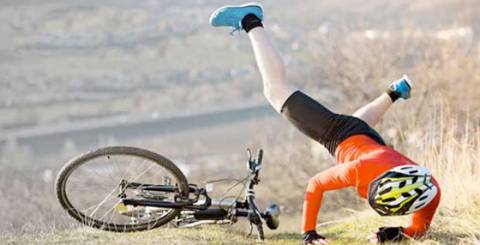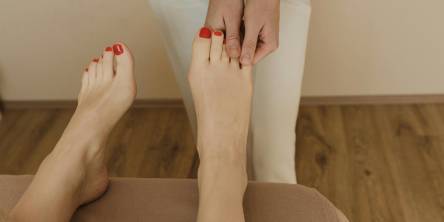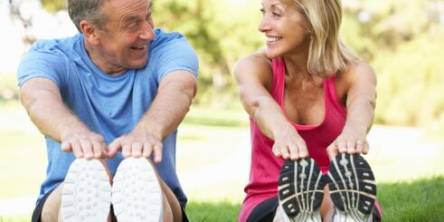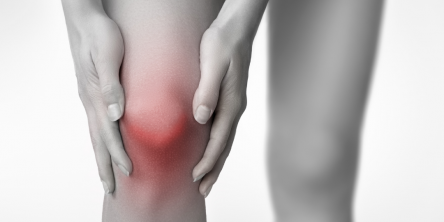Understanding 6 Common Cycling Injuries: How to Stay Safe and Pedal On

Cycling is more than just a sport or a leisure activity; it's a way of life for many. Whether you're an avid cyclist or use your bike for transportation, there's a lot to love about this two-wheeled mode of getting around. But with great rides come great responsibilities, particularly when it comes to safety. Injuries can become a part of the journey, especially if you're repeating the same motions and not taking proper precautions. Let's delve into these common cycling injuries, understand how they happen, and discover ways to avoid them.
1. Urinary troubles
Pudendal neuropathy, which leads to numbness or pain in the genital or rectal area, is a well-known issue among male cyclists who pedal frequently. This discomfort often arises from compressed blood flow in the abdominal region. So, what can you do to prevent such discomfort? Consider these changes:
- Invest in padded cycling shorts.
- Opt for a wider seat or one with added padding.
- Experiment with a seat design that reduces pressure in crucial areas.
- Adjust the seat's tilt for better comfort.
2. Hand numbness and wrist pain
If you're experiencing discomfort and numbness in your little and ring fingers, you might be dealing with ulnar neuropathy. This issue is linked to prolonged pressure on the handlebars, often leading to carpal tunnel syndrome. To reduce the impact on your hands and wrists, try the following:
- Maintain a slight bend in your elbows while riding to act as a shock absorber.
- Alternate the pressure you apply to the inside and outside of your palms during the ride.
3. Calf tendonitis
Your Achilles tendon connects your calf muscle to your ankle joint. Cycling, especially the repetitive pedaling motion, can subject your calf muscles to significant strain, potentially leading to Achilles tendonitis. Here's how to tackle it:
- Consider physiotherapy and massage to aid tendon healing.
- Practice stretching and strengthening exercises.
- Stretch before each ride.
- Ensure your bike setup minimizes strain on your calves.
If you fail to achieve pain relief with conservative methods, make sure you reach out to an experienced podiatrist for treatment instead of searching “Achilles tendon doctor near me” and choosing the first option you see.
4. Knee osteoarthritis
Osteoarthritis is a prevalent illness among athletes that is characterized by the gradual wear and tear of joint cartilage. You may have knee osteoarthritis if you are experiencing pain, swelling, and a reduced range of motion in your knees. Here's what you should do:
- Pay attention to morning stiffness that eases with movement.
- Stay active to maintain knee flexibility and strength.
5. Neck pain
Neck pain may develop when the neck muscles tire from repeatedly looking up while riding a bike. It's similar to holding your head up for extended periods of time, which causes muscle fatigue. This prolonged neck extension can cause neck arthritis or pinched nerves. Here's how you can deal with it:
- Vary your head position while riding.
- Take breaks and change your gaze to avoid continuous neck extension.
6. Hip Ache
Hip pain in cyclists can be caused by a variety of conditions, including bursitis, snapping hip syndrome, impingement syndrome, labral tears, or piriformis syndrome. While diagnoses vary, overtraining, shifting into high gear, and muscular imbalances are usually to blame. Consider the following to relieve hip pain:
- Stretch frequently and concentrate on hip flexibility.
- Maintain a balanced muscle use to avoid overuse and muscle fatigue.
Let's talk about first aid for common sports injuries as well. The PRICE principle is frequently recommended. It is an acronym that stands for Protection, Rest, Ice, Compression, and Elevation. This approach attempts to:
- Reduce swelling and pain.
- Lay the foundation for a successful recovery.
It's a good idea to keep this treatment going for at least 48 hours following an accident, with a focus on certain components as needed.
The bottom line
Cycling offers a wonderful opportunity to stay active while relishing the beauty of the outdoors. By familiarizing yourself with these typical injuries and taking preventative measures, you can ensure that your cycling adventure remains secure and delightful. So, get ready, don’t ignore your body’s signals, and keep those pedals spinning!
Similar Articles
Search engine optimization (SEO) may help physical therapists improve their online exposure and drive more visitors to their website.
You're sitting at home with two completely different treatment plans from two doctors you trust.
When conservative therapy fails, surgery may be required to alleviate chronic foot or ankle discomfort.
Your body changes with time - muscles and bones shift, ligaments loosen, and circulation may slow. Unfortunately, the aging process has an impact on our feet as well.
Back problems aren't just discomfort or temporary back pain. Many of them can be extremely dangerous and lead to serious complications if you don't seek medical attention on time.
Sciatica is a condition in which the sciatic nerve, the longest nerve in the human body, becomes irritated or pinched
Irritable bowel syndrome (IBS) is a dysfunction of the gastrointestinal tract that manifests as abdominal pain, bloating, flatulence, and intestinal discomfort (constipation, diarrhea, or a combination of both.
Peripheral neuropathy is when the nerves outside your brain and spinal cord—called peripheral nerves—aren’t working the way they should.
Ah, knees. Those underappreciated joints that heroically carry us up stairs, into dance battles, and through every questionable workout decision we make during a fitness phase.









